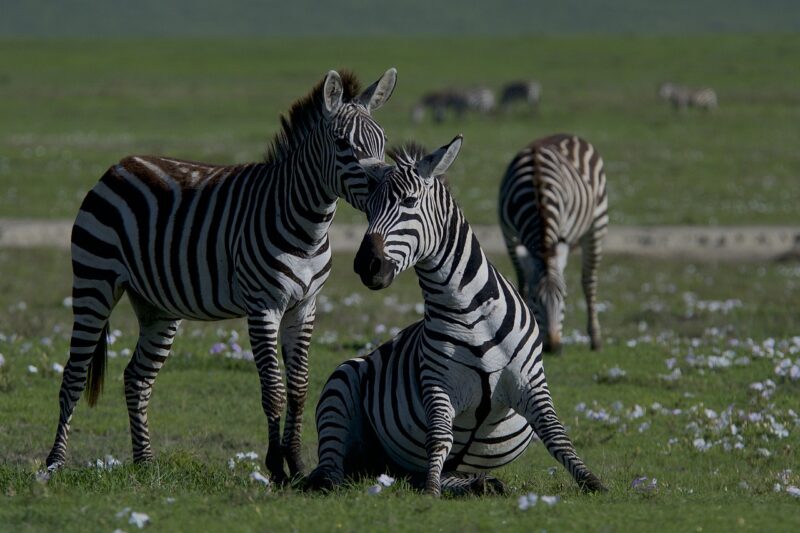Why Certain Plants Are Considered Invasive and How They Impact Ecosystems
November 12, 2024

Plants inhabit every corner of the Earth, adapting and evolving in accordance with their surroundings. However, some plant species take this adaptability to an extreme, becoming known as invasive species. Invasive plants can significantly disrupt native ecosystems, posing threats not only to biodiversity but also to agriculture and human health. This article delves into the characteristics that make certain plants invasive, the impact they have on ecosystems, and what we can do to mitigate their spread.
1. Understanding Invasive Plants
To define what an invasive plant is, we must first understand what it means for a species to be considered invasive. Generally, an invasive plant is one that is non-native to a specific ecosystem and, once introduced, spreads rapidly while causing harm to the environment, economy, or human health.
The U.S. National Invasive Species Information Center defines invasive species as those that:
- Are introduced to areas outside their natural range
- Establish themselves and spread quickly in their new environments
- Cause economic or environmental harm, or harm to human health
It’s important to note that all non-native plants are not invasive. Many non-native species are cultivated intentionally for landscaping or agriculture without causing harm to their new environment. Invasive plants differ by having traits that allow them to outcompete native plants and dominate ecosystems.
2. Characteristics of Invasive Plants
Invasive plants share several characteristics that contribute to their ability to thrive in new environments and disrupt native ecosystems. Understanding these traits can help in identifying and managing invasive species effectively:
- Rapid Growth and Reproduction: Invasive plants tend to grow quickly and produce a high number of seeds, often germinating early in the season. This allows them to establish vast populations quickly, outpacing native plants in both resource acquisition and territory expansion.
- Aggressive Spreading Mechanisms: Many invasive species can spread through various means such as wind, water, and animal vectors. For instance, the seeds of some invasive plants are adapted to be dispersed long distances, enabling them to infiltrate new areas easily.
- Resilience and Tolerance: Invasive plants often exhibit resilience to different environmental conditions—tolerating droughts, poor soils, or disturbances like fire. These traits allow them to thrive in varied landscapes that may not be favorable for native plants.
- Ability to Alter Soil Chemistry: Some invasive species can change the nutrient composition of the soil, making it less hospitable for native species. Examples include certain legumes that introduce nitrogen into the soil, which can benefit their growth while hindering local flora adapted to lower nitrogen levels.
These characteristics highlight why invasive plants can become dominant and lead to ecological imbalance.
3. Impacts on Ecosystems
The impact of invasive plants on ecosystems can be profound. They not only threaten the survival of native species but also disrupt entire ecological communities. Here are a few areas in which invasive plants create significant effects:
- Biodiversity Loss: Invasive plants compete for resources such as sunlight, water, and nutrients, often leading to the decline or extinction of native plant species. This loss of biodiversity can have cascading effects throughout the ecosystem, affecting all species that depend on native plants for food and habitat.
- Alteration of Habitats: Invasive plants can change the structure and health of habitats significantly. For example, dense mats of invasive species can alter water flow in wetlands, reducing their ecological functions and threatening aquatic life.
- Economic Impact: The spread of invasive plants can have detrimental effects on agriculture. They can outgrow crops, reduce yields, and require expensive control efforts. According to the U.S. Department of Agriculture, management of invasive species costs U.S. agriculture more than $200 billion annually.
- Impact on Human Health: Some invasive plants produce allergens or toxins that can harm human health or disrupt recreational activities. For instance, giant hogweed can cause severe skin burns when exposed to sunlight, representing a direct threat to public safety in areas where it has established itself.
The ecological consequences of invasive species extend beyond immediate effects, sometimes resulting in long-term shifts in ecosystem dynamics.
4. Notable Examples of Invasive Plants
Several invasive plant species illustrate the challenges posed by their introduction and dominance in new ecosystems. Here are a few notable examples:
- Kudzu (Pueraria montana): Often referred to as “the vine that ate the South,” kudzu was initially introduced to prevent soil erosion but has since covered vast areas in the Southeastern U.S., suffocating native plants and altering ecosystems.
- Purple Loosestrife (Lythrum salicaria): This wetland plant outcompetes native vegetation across North America, forming monocultures that devastate natural wetland habitats.
- Japanese Knotweed (Fallopia japonica): Characterized by its bamboo-like appearance, Japanese knotweed can damage infrastructure and cause harm to the ecological integrity of rivers and streams.
- Giant Reed (Arundo donax): Found in riparian zones, giant reed forms dense stands that displace native plants and alter water availability in ecosystems.
These examples underscore the variety of invasive species across different habitats and the urgent need for management and control efforts.
5. Management and Control of Invasive Plants
Addressing the issue of invasive plants requires a multifaceted approach that combines awareness, prevention, and management. Here are effective strategies:
- Education and Awareness: Providing information on identifying invasive species can help prevent their spread. Community education initiatives can inform people about the impact of introducing non-native plants into local environments.
- Prevention of Introductions: Restricting the importation of known invasive species can help prevent new introductions. Regulations and guidelines for gardeners and landscape designers can promote the use of native or non-invasive plants in landscaping.
- Early Detection and Rapid Response (EDRR): Monitoring natural areas for new infestations allows for swift action before invasive plants can establish themselves widely.
- Eradication and Control Methods: Utilizing a mix of mechanical, chemical, and ecological control methods can help minimize invasive plant populations. For instance, manual removal, targeted herbicide application, and even the introduction of natural predators can be effective strategies.
- Restoration of Native Vegetation: After controlling invasive plants, restoring native plant communities can help rebuild ecosystems and enhance resilience to future invasions.
By employing these strategies, communities and conservationists can work together to mitigate the effects of invasive plants and restore ecological balance.
Conclusion
Invasive plants present significant challenges to ecosystems, economies, and human health. By understanding their characteristics, impacts, and management strategies, we can take important steps towards protecting native biodiversity and maintaining healthy ecosystems. Preventing the spread of invasive species requires collaborative efforts, awareness, and a commitment to sustainable practices. Through these coordinated actions, we can create a healthier environment for all.
Let us remain vigilant in our fight against invasive plants and invest in wholesome ecological practices that promote diversity and resilience in our ecosystems.






